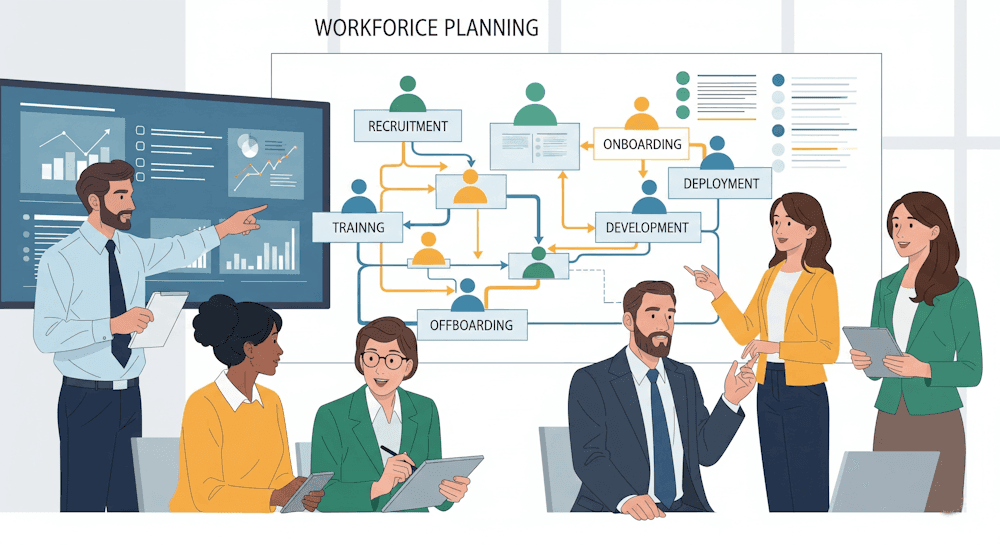Here’s a look at the importance of HR, based on the key roles it plays in an organization
Determining future personnel needs: Human resource planning is significant because it helps to determine the future personnel needs of the organization. If an organization is facing the problem of either surplus or deficiency in staff strength, then it is the result of the absence of effective HR planning. Effective HRP systems also enable organizations to have good succession planning.
Cultivating highly talented personnel: HR managers recruit the right people with the right skills for an organization. At the same time, they enable the skill development
organization’s existing workforce. It, thus, helps an organization deal with the shortage of skilled manpower.
Aiding strategic planning: HRP has become an integral part of strategic planning. HR planning provides inputs in the strategy formulation process in terms of deciding whether the organization has got the right kind of human resources to carry out a given strategy. HRP is also necessary during the implementation stage of said strategy in the form of deciding to make resource allocation decisions related to organization structure, process and human resources. In some organizations, HRP plays as significant a role as strategic planning and HR issues are perceived as inherent in business management.
Implementing international strategies: An international expansion strategy of an organization is facilitated to a great extent by HR planning. The HR department‘s ability to fill key jobs with foreign nationals and oversee the reassignment of employees from within or across national borders is crucial to helping international businesses meet their goals. With greater globalisation, there is a growing need to integrate HRP more closely with an organization’s strategic plans. Without effective HRP and subsequent attention to employee recruitment, selection, placement, development, and career planning, the growing competition for foreign executives may lead to expensive and strategically descriptive turnover among key decision-makers.
Creating a foundation for personnel functions: HRP provides essential information for designing and implementing personnel functions, such as recruitment, selection, training and development, personnel movements like transfers, promotions and layoffs.
Increasing investments in human resources: Organizations are making increasing investments in human resource development compelling the increased need for HRP. Organizations are realizing that human assets can increase in value more than physical assets. An employee who gradually develops skills and abilities becomes a valuable asset for the organization.
Organizations can make investments in their personnel either through direct training or job assignment and the monetary value of such a trained, flexible, motivated productive workforce is difficult to determine. Top officials have started acknowledging that the quality of the workforce is responsible for both short term and long term performances of the organization.
Tackling resistance to change: Employees are always reluctant whenever they hear about change or even about job rotation (shifting one employee from one department to another). Organizations cannot undertake job rotation without any specific planning that matches the skills required with the existing skills of employees.
Uniting the perspectives of line and staff managers: Though HRP is initiated and executed by the corporate staff, it requires the input and cooperation of all managers within an organization. Each department manager knows about the issues faced by their department more than anyone else. So communication between HR staff and line managers is essential for the success of HR Planning and development.
Succession Planning: Human Resource Planning prepares people for future challenges. Under an effective HRP, the best employees are identified, trained, assessed and assisted continuously so that such trained employees are ready to quickly take on their responsibilities and positions of their bosses or seniors as and when the situation arrives.
Other benefits of HRP are:
- It helps in judging the effectiveness of manpower policies and programmes of the management.
- It develops awareness on effective utilization of human resources for the overall development of the organization.
- It facilitates the selection and training of employees with adequate knowledge, experience and aptitudes to carry on and achieve the organizational objectives.
- It encourages the organization to review and modify its human resource policies and practices and to better utilise human resources.





